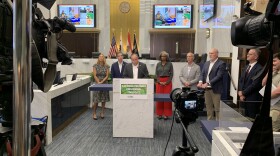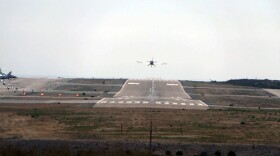Originally aired November 7, 2007.
Tom Fudge: Over the past four years, San Diego County has been hit by two enormous series of fires: The Cedar and Paradise fires of 2003 and the Harris and Witch fires last month. These fires took lives, destroyed homes and consumed hundreds of thousands of acres of wildland. They were driven by dry conditions and Santa Ana winds. And they were fed by the brushy native vegetation called chaparral.
As with all catastrophic fires, critics stand by and find fault with the fire response and prevention policies. When it comes to land management, some people have criticized local officials for not clearing more brush; for not doing prescribed burns. The theory here is that we've allowed too much woody fuel to grow large and old on the land. Some people also argue that we put out too many small wild fires. If we let most fires burn, they say, that would reduce the amount of fuel on the ground and prevent huge, catastrophic fires in the future.
But others say that there isn't much we can do to stop large fires that start in conditions like we had two weeks ago. Everyone agrees that we need to protect ourselves and do the best we can to protect our wild environment. But how do we do that, when it comes to fire?
Guests
- Richard Halsey, director of the California Chaparral Institute , specializing in wildfire ecology. He is also a former wildland firefighter.
- C.J. Fotheringham, doctoral candidate in the department of ecology and evolutionary biology at University of California, Los Angeles, and a specialist in fire ecology.




